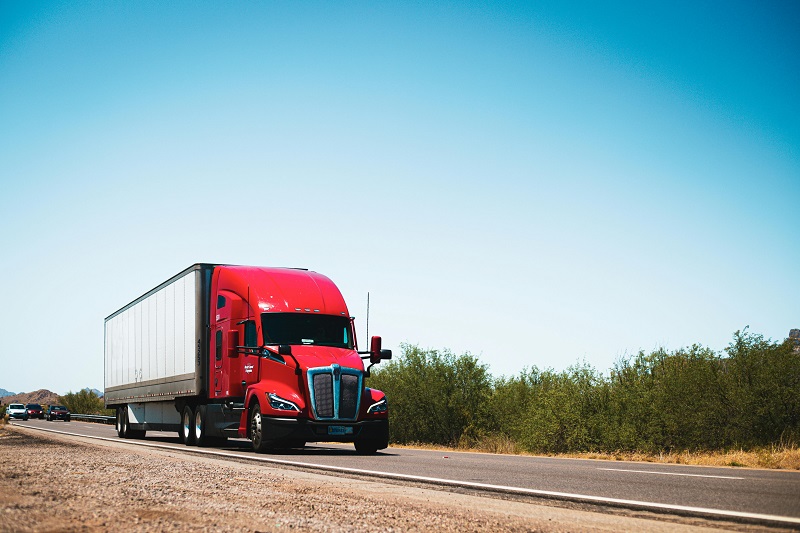Embracing the Fundamentals of Interstate Freight Service

It’s commonplace to see substantial trucks transporting goods over vast distances on the freeway, but do we ever stop to ponder what’s really involved in the logistics of this extensive movement? Furthermore, how does an interstate freight service operate, and what pivotal role does it play in our economic system?
Our consumption patterns would drastically shift without the systematic networks of the freight industry. From the ripe avocados in your local grocery store to the latest tech gadget on your doorstep, interstate freight services play an invisible yet indispensable role in our lives. In this article, we will traverse through the veins of these extensive networks, understand their complexities and applaud their efficiencies.
Buckle up readers; it’s time for a journey beyond the bumper-to-bumper traffic and into the intricate world of interstate freight services. From the “why” and “what” to the “how” and “when”, this thorough exploration will help empower you with insights and guide you through the meandering highways and byways of this fascinating industry.
Unraveling the Necessity of Interstate Freight Services
Why are interstate freight services so critical to economies, and what would happen without them? To put it simply, goods need to shift, and they don’t move themselves. This sector is the lifeblood of the economy, transporting goods from manufacturers to retailers and combatting geographical limitations.
Furthermore, efficient freight services ensure that goods reach the market fresh and in top-quality, impacting industries like agriculture, retail, and tech. In essence, a well-coordinated freight service is a well-oiled economic machine, enabling commerce across regional and national borders.
The reliability and predictability of these services also impact supply chain forecasting. With precise delivery schedules, businesses can plan inventory management with confidence, leading to optimal operations and reduced costs.
The Complex Anatomy: Forms of Interstate Freight Services
When it comes to forms of freight services, one size hardly fits all. Among the critical factors to consider are the type of goods, delivery urgency, and cost constraints.
Firstly, trucking (‘over the road’ freight) is a popular choice due to its versatility and cost-effectiveness. It comes in various forms – flatbeds, refrigerated trucks, or dry vans, each designed for specific cargo.
Secondly, rail freight is a preferred option for large, heavy goods offering lower costs over long distances. This system often works in tandem with road freight for the initial and final stretches (drayage) of the journey.
Thirdly, air freight is the go-to option when time is of the essence. Although it incurs higher costs, it guarantees the fastest shipping time for critical or perishable goods.
The Checks and Balances: Regulations of Interstate Freight Service
Governance plays an enormous role in interstate freight movements, maintaining a balance between economic activity and safety. The Department of Transportation (DOT) and the Federal Motor Carrier Safety Administration (FMCSA) are the primary bodies implementing regulations.
Freight companies must abide by safety regulations, hours of operation, weight limits, and vehicle maintenance guidelines. These measures help ensure the safety of the goods, the drivers, and the public.
Environmental regulations also come into play, mandating companies to operate within carbon emission limits. Investment in low-carbon lorries and cleaner technology comes as a societal benefit born out of these necessities.
The Pros and Cons of Interstate Freight Services
Like any industry, shipping goods interstate comes with its own pros and cons.
On the upside, it enables far-flung rural regions to access goods otherwise unattainable, sustains businesses through an interconnected supply chain, and provides employment opportunities. Freight services also offer variety, with different modes catering to unique customer demands.
On the downside, constant traffic, environmental concerns, operational costs, and fluctuating fuel prices are just some challenges freight services faces. Add to this, liability issues, potential goods damage, and the continual need for driver recruitment, training, and safety.
Adapting and Evolving with Technology
It’s remarkable seeing how the freight industry is responding to the digital age. Technologies like GPS tracking, electronic logging devices, and automation lead to enhanced efficiency and accountability.
Artificial Intelligence and Machine Learning are helping predict delivery routes, avoiding traffic congestions and reducing time and fuel costs. In addition, automated load matching services are connecting shippers and freight carriers like never before, bidding adieu to inefficiencies.
Holographic technology, Virtual Reality (VR), and Augmented Reality (AR) are now used for training drivers, a futuristic approach towards safety, and improving efficiency.
Closing Thoughts on the Intricacies of Interstate Freight Service
As complex as the interstate freight realm may seem, it’s this same complexity that ensures goods we take for granted arrive at our doors and into our lives with ease. We’ve cruised through the essence of these services, its varied forms, regulations, pros & cons, and how tech is driving its future.
Remember, every time you sip on exotic coffee or don the latest fashion accessory, there’s a seamless network of interstate freight services to thank. It is indeed a vast, interconnected web of logistics that keeps our world moving, quite literally! The freight industry truly showcases how synchrony between man, machine, and system can orchestrate a symphony of efficiency and connectivity.